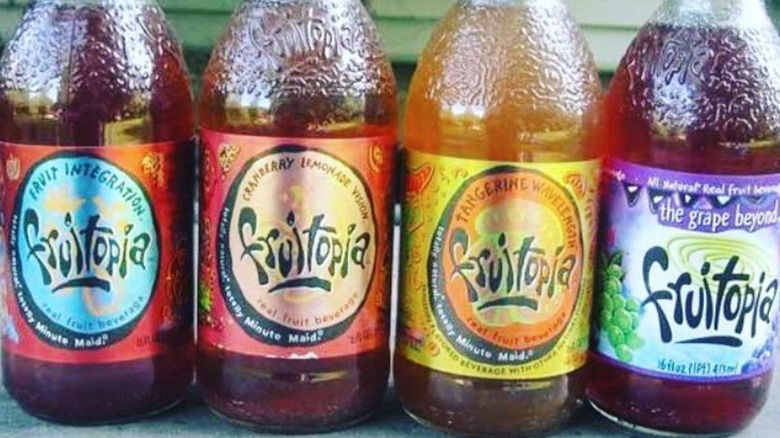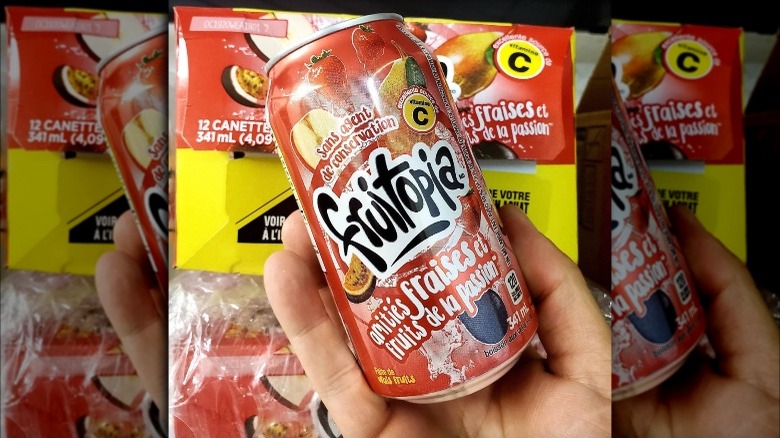Whatever Happened To Fruitopia?
Tamagotchi's, Beanie Babies, Lisa Frank, The Spice Girls, and Fruitopia: these things all have something in common. They were 1990s crazes, signs of the decade's colorful playfulness. And they are also, well, not crazes anymore. In the case of Fruitopia, it barely even exists. What could have possibly happened to end the reign of every '90s kid's favorite fruity drink?
According to Atlas Obscura, Fruitopia juices were born out of that whole new-age-esque turn to health and wellness that blossomed in the early '90s, sort of like a reinvented hippie phase, but with the perks of actually paying attention to how things affect your body. One result of this awareness is that sugary sodas fell out of favor. While Fruitopia was not much better — it was actually only about 17% juice — it seemed much more appealing than carbonated syrup water. When everyone started going gaga for Snapple's natural ingredient-geared drinks, Coca-Cola wanted in on that action and the (still pretty sugary) Fruitopia was their offering to the fruit juice scene. The New York Times even called Fruitopia a rip-off of Snapple.
In addition to the wannabe Snapple reputation, Fruitopia also encountered some controversy when students at Ohio's Miami University claimed they actually named the drink as part of a Coca-Cola contest in 1991. Coca-Cola refused to acknowledge this and took credit for the brand's moniker. Despite the rocky start, however, Fruitopia went on to enjoy a stratospheric rise in popularity.
The rise and fall of Fruitopia
In order to lean into the whole '90s new age thing, Coca-Cola created a sort of nouveau-hippie campaign, complete with dreamy art and funky flavor names like Citrus Consciousness (per Atlas Obscura). The brand worked with Sergio Zyman, the marketing brains behind Cherry Coke and Diet Coke, and Chiat/Day, an advertising agency that had done quirky work for Apple. Fruitopia came to embody iconic '90s pop culture. There was a "Magic Fruit Bus," a sensory overload on wheels roaming the country with teens handing out bottles (per 80s Kids). Kate Bush recorded jingles for Fruitopia's trippy commercials, and the brand even got a shout-out on The Simpsons. By the mid-90s, Fruitopia was a hit.
The success was short-lived, though. Sales dropped so low for six flavors that Coca-Cola stopped making them, presumably due to the fact that, unlike the even more popular Snapple, Fruitopia actually had nothing natural to back up its marketing. Then, that marketing led to more snafus: Atlas Obscura writes that the brand got handed off to an older, stuffier ad agency and repeatedly released slogans that were either too close to those of other companies or were just panned by customers. In 2000, Royal Cola sued Coke for bribing supermarkets to display more Fruitopia (via The New York Times). By 2003, Fruitopia was gone.
Or was it? Like a movie villain's wink-wink moment that signals a sequel will come, it's rumored that some Fruitopia flavors were just moved under Coke's Minute Maid brand, and you can indeed get actual Fruitopia if you live in Canada.

